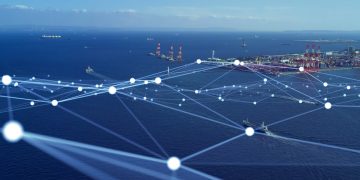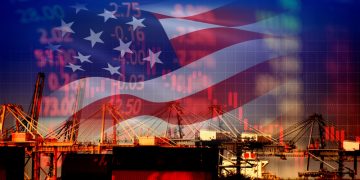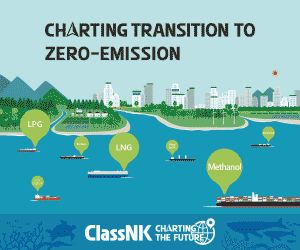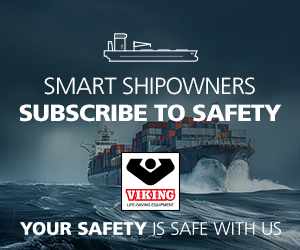Stelios Kyriacou, Technical Director – Wärtsilä Ballast Water Management Systems presenation during the 2015 GREEN4SEA Forum
The presentation introduces the ballast water issues in order to act as a reminder of the reasons for the ballast water convention. The international and local regulations are examined from the standpoint of performance and equipment type approval processes. Finally the Wärtsilä BWMS equipment is briefly presented with focus on the USCG approval testing of the AQUARIUS EC BWMS electro-chlorination system.
First of all I would like to introduce Wartsila, the engine manufacturer as known by most that has an extensive environmental product portfolio. Wartsila recognises that no one ballast water treatment solution will be suitable across a fleet that is traversing the oceans of the world, in very different climatic conditions and very big differences in terms of flow requirements etc. Therefore, Wartsila decided that the only way to move forward is by means of developing two technical solutions under the name Wartsila Aquarius. The first is based on filter and UV, and the other, is filtration with side stream Electro-Chlorination. Both systems have been successfully IMO tested and type approved. Both systems have also a USCG AMS acceptance and accreditation and both are available for hazardous area installation.
At this point, what I’d like to do is to talk about ballast water. Many of you don’t know what it looks like. Here is a relevant picture.

This is untreated ballast water as it has been drawn by the pump and as it has been delivered into a sampling pot during our shipboard testing back in 2011. This is sample was collected port of Southampton. What you actually observe, is the significant number of small organisms, but simultaneously you observe in the background of the slide, a lot of sedimentary material and fibrous materials that represent plants. So, the challenge that we have to deal with, is quite significant, as vendors and as developers of technology. If we do not control the sediment, which is part of the BW Convention under Regulation B5, then the net outcome of that, will be the presence of a significant amount of sedimentary particles in the tanks as you can see in picture 1, which is an indication of sediment been brushed out after an opening of the bottom of a hull in a river vessel. Picture 2 shows findings from DNV, representing live biology of organism living in the ballast tank sediments.
We already have two International Regulations in existence. One truly International and one Local. One already enforced (USCG) and the IMO Convention, which is not yet ratified. With regard to the available compliance options, I have already heard that we have type approved systems that are one of a number of possible compliance options. What we must not forget is that in the interim as per IMO framework we still have ballast water exchange (BWE) and equally landside reception facilities as a possibility or the option of no discharge. In the US, USCG compliance options include, an AMS, the use of fresh water that has been drawn from the domestic public water supplies in the US and Canada only, landside reception facilities and of course no discharge. Looking into the future however, we have diminishing options. As regulations kicking in, the only viable options that are remaining are the BWMS as the primary solution, and no discharge. And in the case of US Regulations, we have the type approved system under USCG Rules, the use of public water supplies from fresh water and no discharge.
Available compliance options
The overall frame of the IMO and the USCG is based upon a set of guidelines and rules. Typically, with regard to the IMO, I am making reference to the G8 and G9 guidelines and equally on the USCG rules 33 CFR 151 & 46 CFR 162 etc. The vendors are trying to address a global problem because ships are not operating in a single area. They do not deal with water that has been drawn during one season. There are seasonal effects in the level of organisms and the content of water. Just to give you an example. The Klaipeda Sea, in Baltic, between Sweden and Finland, in the winter time is almost salt water and in the summer time is fresh water. The reason for changes is because of the melting of ice etc. We also have to deal with water and physical conditions in terms of chemistry and what we must not forget (which is a critical part of this) is the environmental conditions on board ship. The equipment must be designed and built to be used on board ship. There are many examples of land based solutions that have been migrated to ships and have really failed to perform.
In addition, next issue is covering the regulatory framework for type approvals. We have already seen that we have two regulatory frameworks, the USCG with the ETV protocol and the IMO G8 and G9. There are significant differences between these 2 protocols. Under the G8, we can test 2 salinities and get the certificate for 3. Under the USCG rules this is a no go option. We have to test in all salinities that are what the certification has to be met. We also have to carry out an O&M test for 10000m3 or more. Under the G8 regulation there is not such a requirement for operation and maintenance testing of the systems. There is a significant difference also in terms of the hold time regarding the process. The USCG or the ETV rules dictate a minimum 24hr the G8 requires no less than 5 days.
USCG – ETV vs IMO – G8
Regarding toxicity, for the ETV Protocol there is no requirement on the toxicity evaluation in a prescribed way of a Ballast Water Discharge. However, the IMO under G9 has got a much more rigorous framework, in my view, which is based around all the rules, regulations and the means by which the committee actually operate. So, I think, although we do say that G8 is inadequate etc. we have to give credit to the IMO with regard to the toxicity evaluations of discharges. I believe it is superior to what exists in US rules. And of course at the end of the day, the other significant difference. When we did our IMO testing, yes we were there operating the systems. Nobody told us not to. There were independent facilities but we did operate. On the other hand, what we actually have is under the ETV protocol is no no, you give the keys and you run away. It is just like taking your car into a garage. You give them the keys and you just wait for the bill to arrive. That’s exactly how it works.
Now, returning back to the type approval process. Globally, for all industrial products, whether are for land or for shipboard applications, the type approval process follows the route to demonstrate compliance to a pre-set number of standards and levels. And, when you have satisfied these predefined minimum standards, you can obtain your type approval. Ultimately what we have to accept is that a type approval does not guarantee performance. There is no guaranteed performance under any regulatory framework of type approval rules whether it is EC marking at European level or USCG or IMO type approvals. So equipment that meets the minimum stated standards will be type approved.
At Wärtsilä we are fully engaged with the USCG type approval process. Over the period July to December 2014 we have completed the land based testing of our Electro-chlorination systems Wärtsilä Aquarius EC, at the facilities of DHI in Denmark. A summary of the test results is shown below for all tests that have been carried out in accordance to the ETV protocol.
ETV Land based test data summary
System testing was carried in challenging conditions that have consistently exceeded the ETV protocol parameters that are shown in the green/grey bands. The biological performance data is also shown. In all three salinity conditions tested the data confirms that Wärtsilä Aquarius EC is a highly effective technology delivering high levels of treatment compliance in all water salinities.
So from the point of view of the regulations, the BWC ratification as has already been mentioned, is considered to be imminent, so there is only one way to deal with this: to be prepared and proactive.
At this point I would like to introduce to you the Aquarius Ready® Phased approach to retrofits. It is a fairly simple model where Wartsila proposes that the retrofitting of ships can be done in 2 phases. At this precise moment, the majority of ships do have a dry-docking schedule. You will do a lot of work during that period of time, it would be important, if you wish, also to consider the type of installation of BWMS. And therefore carry out the early stages of preparation such us the hot work, relocation of equipment, switch board upgrades in preparation for equipment installation. At a later date you can undertake system installation. Pictorially this is what you currently have (fig. A), this is what you prepare as phase 1 (fig .B) and later on, when you are ready to install the equipment, this is what you do (fig. C). It is a non brainer. It is a phased way to spend your money. You extend the scheduled dry dock scope of work to carry out your ballast ready preparations thus eliminating a special dry-dock for BWMS installation.
In conclusion, what is the message? Unfortunately there is a lot of pessimism in the market caused by negative discussions about ballast water systems and regulations. We have technological solutions for all ship types proven to perform well and deliver compliance in all environmental conditions. We all seem to be looking at the horizon seeing a big storm. However, I would like to leave you with the thought that we have to keep calm and cultivate and air of unrelenting optimism in order to progress.
Above article is an edited version of Stelios Kyriacou presentation during 2015 GREEN4SEA Forum
You may view his presentation video by clicking here
| Click here to view all the presentations on this GREEN4SEA Forum |
————————————————————————————-
About Stelios Kyriacou
Technical Director – Wärtsilä Ballast Water Management Systems
 Dr Stelios Kyriacou is a senior technical executive with a career spanning some 30 years and a focus on design, applied research and development. Since 2009, he has led the Wärtsilä, formerly Hamworthy, activities on ballast water treatment technology development. He has managed the design, research and development of the Wärtsilä AQUARIUS® BWMS range and delivery of market ready products. This is the most comprehensive range of BWMS available in the market and includes both a filter UV and a filter EC (electro-chlorination) BWMS that are available for both safe and hazardous area installations. Both the Wärtsilä BWMS technical offerings have been IMO Type Approved through the Flag Administration of the Netherlands. The filter UV system was granted AMS acceptance in 2013 by the USCG including fresh water operation whilst the filter EC systems were granted an AMS acceptance in 2014. Dr Kyriacou is a member of the IMO MEPC Ballast Water Working Group and has been an invited speaker and panellist on a number of ballast water technology events in Europe, USA and Asia. He is a visiting professor and chairman of the industry advisory board at Cranfield University, UK and a member of a number of National (UK) and European committees dealing with maritime strategy, regulations, technology research, development and innovation.
Dr Stelios Kyriacou is a senior technical executive with a career spanning some 30 years and a focus on design, applied research and development. Since 2009, he has led the Wärtsilä, formerly Hamworthy, activities on ballast water treatment technology development. He has managed the design, research and development of the Wärtsilä AQUARIUS® BWMS range and delivery of market ready products. This is the most comprehensive range of BWMS available in the market and includes both a filter UV and a filter EC (electro-chlorination) BWMS that are available for both safe and hazardous area installations. Both the Wärtsilä BWMS technical offerings have been IMO Type Approved through the Flag Administration of the Netherlands. The filter UV system was granted AMS acceptance in 2013 by the USCG including fresh water operation whilst the filter EC systems were granted an AMS acceptance in 2014. Dr Kyriacou is a member of the IMO MEPC Ballast Water Working Group and has been an invited speaker and panellist on a number of ballast water technology events in Europe, USA and Asia. He is a visiting professor and chairman of the industry advisory board at Cranfield University, UK and a member of a number of National (UK) and European committees dealing with maritime strategy, regulations, technology research, development and innovation.
In the starting, I was explicit with you propecia before and after has changed my being. It has become much more fun, and now I have to run. Just as it is incredible to sit.






































































